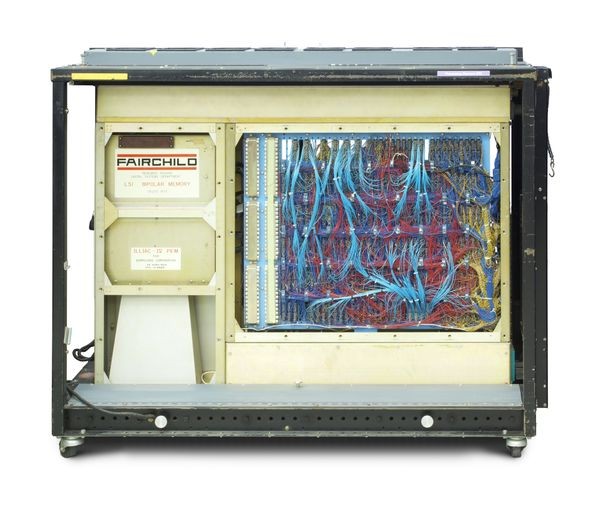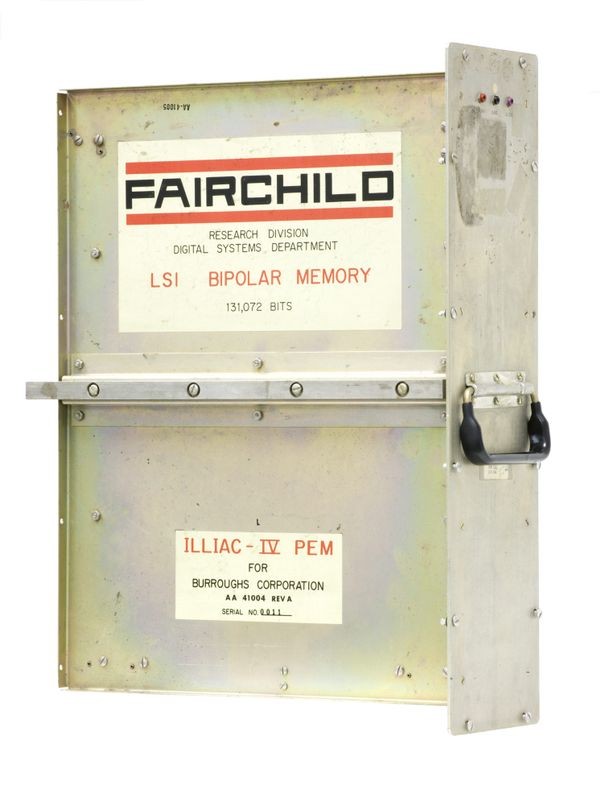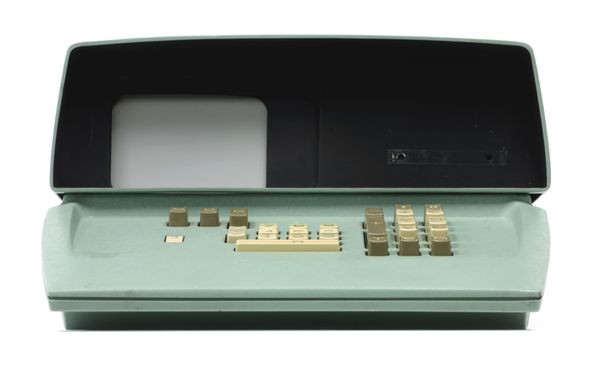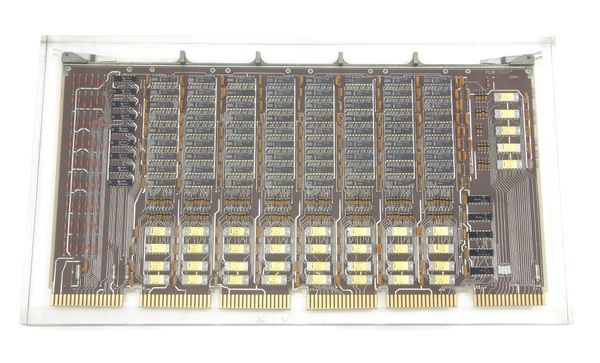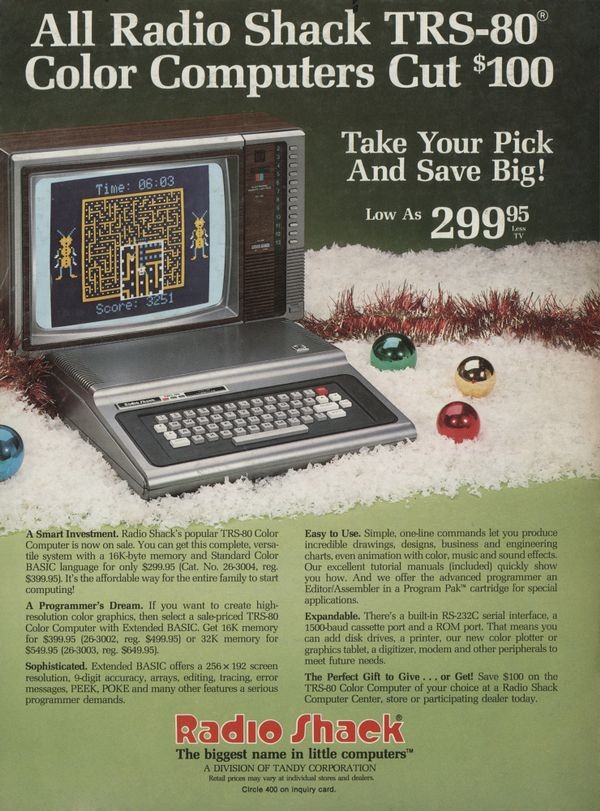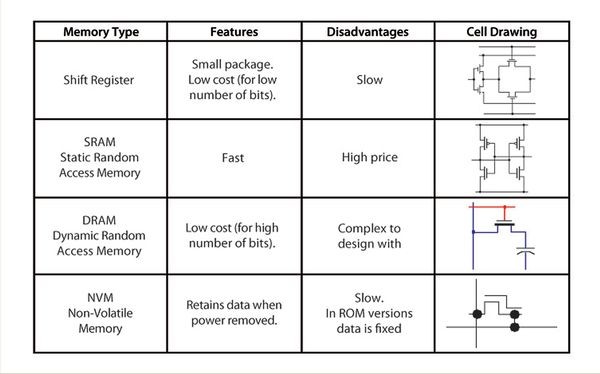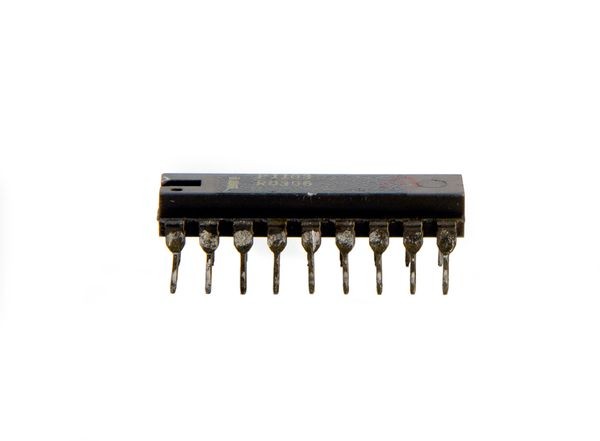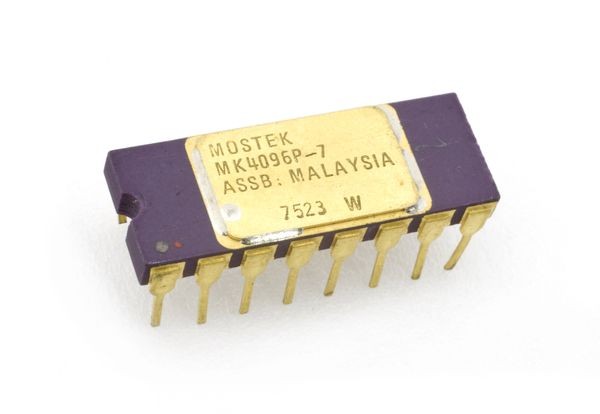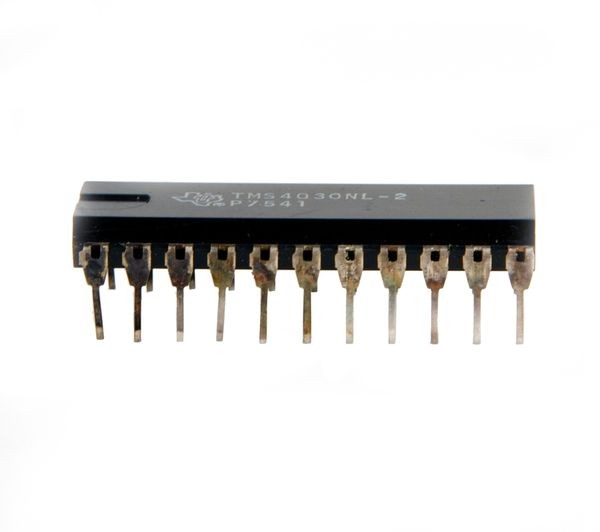Semiconductor Memory: Fast, Cheap, or Dense?
ILLIAC IV SRAM processor element memory (PEM)
One Fairchild-built PEM, which stores 16,834 bytes, is in each of ILLIAC IV’s 64 processors.
Static RAM to the Rescue
Daniel Slotnick’s ideas for the high-performance ILLIAC IV computer were ambitious. Developed for the Department of Defense, ILLIAC IV featured 64 parallel processing elements, each requiring 131,072 bits of memory. But finding the right memory was challenging.
In 1970, Fairchild Semiconductor provided its new 256-bit bipolar SRAMs. “ILLIAC IV was the first machine to have all-semiconductor memories,” recalled Slotnick. “Fairchild did a magnificent job of pulling our chestnuts out of the fire.”
The path was paved considerably earlier: Robert Norman had patented a semiconductor static RAM design at Fairchild in 1963.
ILLIAC-IV PEM LSI bipolar memory system
This 131,072-bit Processor Element Memory is one of 64 in the ILLIAC IV supercomputer. It was built by Fairchild using their new 256-bit bipolar SRAM chips.
View Artifact DetailVictor 3900 calculator engineering prototype
Six 100-bit MOS shift registers built by General Microelectronics provided memory for this calculator, the first to use MOS for both logic and memory. But the immature MOS manufacturing process made the parts unreliable, hobbling sales.
View Artifact DetailDynamic RAM: Smaller is better
The key to higher density is minimizing the number of transistors required to access the storage capacitor.
Early DRAMs, like Fairchild’s in 1968, used four to six. Honeywell’s Bill Regitz proposed a three-transistor design, which Intel built for them. Intel’s next DRAM, the 1K bit “1103,” was the first commercially available. In 1976, Mostek used IBM’s 1967 patent for a one-transistor cell to create a 16K-bit DRAM.
The secret to smaller packages is reusing (“multiplexing”) pins that address a desired bit. Mostek achieved that first with its 1973 4K-bit DRAM.
1103 DRAM VAX memory board
The 1K bit Intel 1103 was the most successful early DRAM. Notoriously difficult to build and use, it nevertheless established the viability of semiconductors for main memory. This board is from the VAX 11/780 computer.
View Artifact DetailTandy TRS-80 Color Computer 1 advertisement
Launched in 1980, this was the first Radio Shack computer to use 64K DRAMs. To reduce cost, early models employed “half-bad" 64K chips that had 32K bits guaranteed.
View Artifact DetailHow Does Semiconductor Memory Work?
The various types of semiconductor memory store bits in one of two ways: transistorized “flip-flops” (which switch between two states representing one and zero), or capacitors (storing a charge for one, no charge for zero).
Shift Registers store bits of either kind in a serially connected string. Data is read out in order, so access to a specific bit is slow.
SRAMs use flip-flops organized to access any bit directly. They use more transistors per bit and are faster than shift registers, but more expensive.
DRAMs, which use capacitors, need as little as one transistor per bit and have simpler access circuits. DRAMs are denser than SRAMs, but slower and must be refreshed periodically.
NVM chips retain data when power is switched off. The manufacturer permanently configures Read-Only Memory (ROM). Forms of memory based on charge storage, such as Flash, can be changed, but only a limited number of times.
Semiconductor Memory Type Properties
This table summarizes the key features of each of the four basic memory architectures.
View Artifact DetailDynamic RAM: Trade Wars
Sales soared when DRAMs entered commercial production in the early 1970s. With customer demand in the millions, DRAMs became the first “mass market” chips, sparking fierce international competition.
In 1976, the Japanese Trade Ministry saw a chance to make Japan a leader in this new industry. It funded Fujitsu, Hitachi, Mitsubishi, NEC, and Toshiba to develop 64K DRAMs. The consortium triumphed, decimating American memory suppliers and provoking the U.S. government to threaten trade sanctions.
Eventually, a Japanese-Americans agreement eased tensions. But it didn’t ease competition. Korea soon eclipsed both.
Memory Packaging
Fierce battles for market dominance in the infant semiconductor memory business included the packaging. Intel used an 18-pin DIP (Dual In-line Package) for its 1970 breakthrough 1K DRAM. TI and Intel used 22 pins for their competing, next-generation 4K devices in 1973. But Mostek soon dominated the 4K market by squeezing it into a 16 pin package. By 1976 everyone adopted Mostek’s approach for 16K and larger DRAMs.
